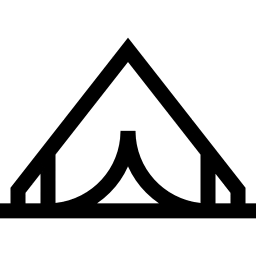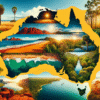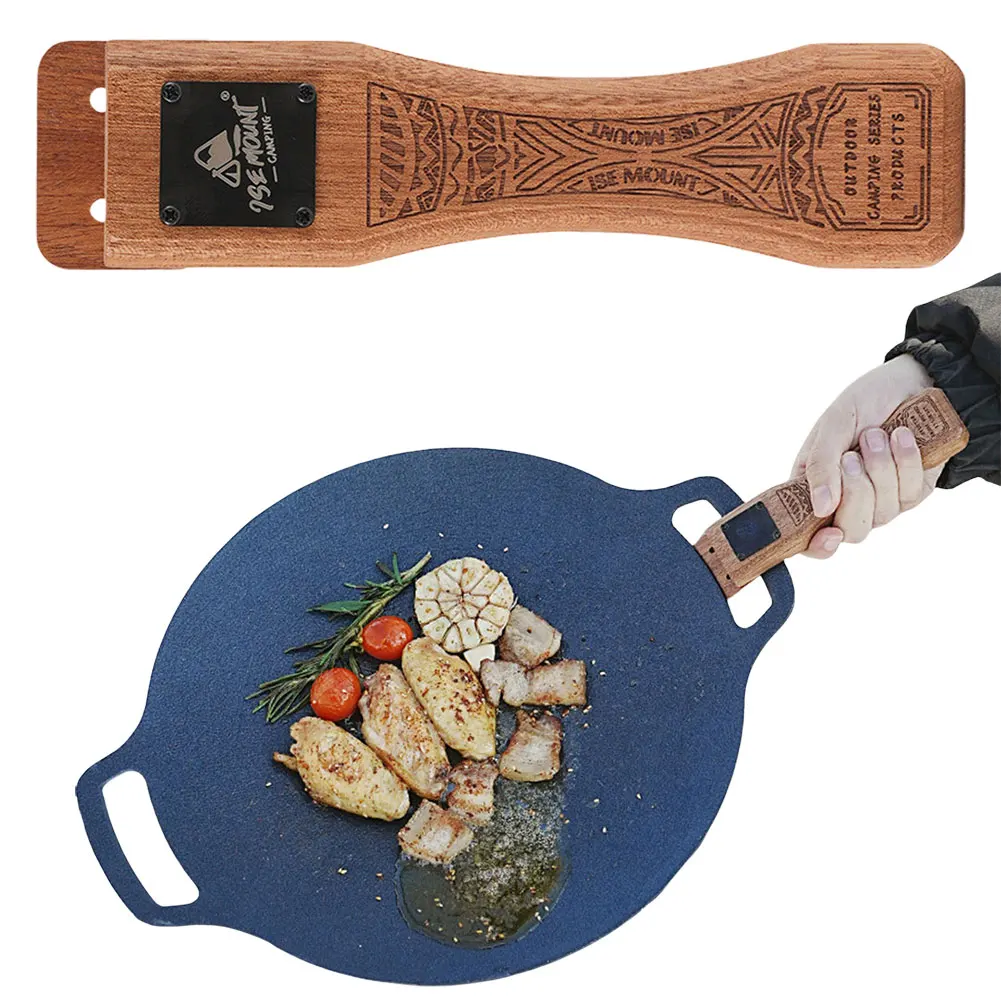Venturing into the great outdoors is an experience unlike any other. The fresh air, the stunning views, the feeling of being totally unplugged—it’s addictive, isn’t it? But let’s be real, getting lost isn’t exactly part of the plan. That’s where the trusty map and compass come in. Ditch the reliance on your phone and learn skills that have guided explorers for centuries.
Why Learn Map and Compass Skills?
You know, in this digital age, it’s easy to rely on GPS and smartphone apps. But what happens when your battery dies, or you’re out of cell service miles from civilization? That’s when knowing how to navigate the old-fashioned way becomes absolutely critical. Here’s why mastering a map and compass is essential for every camper:
- Reliability: No batteries required! A map and compass will work in any weather conditions.
- Self-Reliance: You’re not dependent on technology that can fail. It’s all about empowering yourself.
- Enhanced Awareness: Navigating with a map and compass forces you to observe your surroundings more closely, deepening your connection with nature. You start seeing the landscape in a whole new light!
- Emergency Preparedness: In a survival situation, these skills could literally save your life.
Understanding the Map
Alright, so let’s start with the map. It’s more than just a pretty picture—it’s a scaled-down representation of the terrain. Learning to interpret its symbols and lines is key. Here’s what you need to know:
Map Scales
The map scale shows the relationship between a distance on the map and the corresponding distance on the ground. For example, a scale of 1:24,000 means that one inch on the map equals 24,000 inches (or 2,000 feet) on the ground. Pretty handy, right?
Common map scales for hiking include:
- 1:24,000: Detailed, showing smaller trails and features. Great for hiking and exploring smaller areas.
- 1:62,500: Less detailed, but covers a larger area. Good for overview planning and longer trips.
- 1:100,000: Even less detail, used for broader navigation.
Map Symbols
Map symbols are like a secret language that describes what features you might see on the ground. Features can be anything from trails and roads to rivers, buildings, and vegetation – all represented by standard symbols.
Common map symbols include:
- Blue lines: Rivers, streams, lakes
- Green areas: Forests and wooded areas
- White areas: Open fields or barren land
- Black lines: Roads, trails, railroads, buildings
- Brown lines: Contour lines (more on those later!)
Most maps have a legend explaining all the symbols used – don’t skip reading it!
Contour Lines
Contour lines are the brown lines that connect points of equal elevation above sea level. They’re what give a map its three-dimensional feel and allow you to visualize the terrain. They can seem intimidating but understanding them is critical.
Key things to know about contour lines:
- Close together: Steep slopes
- Far apart: Gentle slopes
- Concentric circles: Hills or peaks
- “V” shapes pointing uphill: Stream or valley
When contour lines cross a trail or road, you can estimate the elevation change you’ll encounter. This will help you in estimating upcoming conditions and preparing accordingly.
Contour Interval? What’s That?
The contour interval is the vertical distance between contour lines. Knowing this allows you to calculate elevation changes between points on the map.
The contour interval can usually be found in the map’s legend.
Choosing the Right Compass: Anatomy of a Compass
Okay, maps down, compasses up! A compass is your trusty direction finder. But it’s worth knowing what’s what on the compass, right?
Baseplate Compass
The baseplate compass is the most common type for hiking and camping. It is reliable, straightforward, and perfect for learning the ropes.
Key parts of a baseplate compass include:
- Baseplate: Clear plastic plate with a ruler and index line for taking bearings.
- Magnetic Needle: Indicates magnetic north (the red end).
- Rotating Bezel: A ring with degree markings (0-360) and cardinal directions (N, S, E, W).
- Orienting Arrow/Box: Used to align the compass with the map’s north.
Other Types of Compasses
There are also lensatic and digital compasses but the baseplate compass remains a solid choice for the vast majority of hikers and campers.
Taking a Bearing
Taking a bearing is the process of determining the direction from your current location to a distant object. This is where the magic happens!
- Orient Yourself: Place the map on a flat surface and orient it to your surroundings by aligning landmarks on the map with the corresponding features on the ground.
- Place Compass on Map: Lay the compass on the map so that the edge of the baseplate aligns with your current location and the destination you want to reach.
- Align the Compass: Rotate the compass bezel until the orienting lines inside the compass housing align with the north-south grid lines on the map. Make sure that the “N” on the bezel points to the north on the map.
- Adjust for Declination: Declination is the angle difference between magnetic north (what your compass points to) and true north (geographic north). Adjust your bearing by adding or subtracting the declination angle, depending on your location. Most maps will tell you the declination.
- Follow the Bearing: Remove the compass from the map and hold it flat in your hand. Rotate your body until the red end of the magnetic needle aligns with the orienting arrow in the compass housing. The direction of travel arrow on the baseplate now points toward your destination.
What About Declination?
Declination varies depending on where you are on the planet. Some compasses allow you to adjust for declination, simplifying the process. If not, you’ll need to manually add or subtract the declination angle when taking bearings. But hey, it’s all part of the adventure, right?
Orienting the Map
Orienting your map means aligning it with your surroundings so that the features on the map match up with the features on the ground. Pretty obvious, but oh-so-important!
- Find Recognizable Features: Identify prominent landmarks around you, such as mountains, lakes, or distinctive rock formations.
- Align the Map: Rotate the map until the landmarks on the map line up with the corresponding features in your view.
- Check with Your Compass: Use your compass to verify that the north on the map points to true north (after accounting for declination, of course).
Once the map is oriented, you’ll be able to easily identify your location and plan your route.
Walking on a Bearing
Alright, now for the fun part! Once you have a bearing, it’s time to put it into practice. Walking on a bearing means following a straight line from one point to another using your compass as a guide.
- Set Your Bearing: As described above, determine the bearing to your destination from your current location. Let’s say it’s 45 degrees.
- Hold the Compass: Hold the compass flat in your hand, making sure that the direction-of-travel arrow is pointing away from you.
- Rotate Your Body: Rotate your body until the red end of the magnetic needle aligns with the orienting arrow in the compass housing.
- Pick a Landmark: Look in the direction that the direction-of-travel arrow is pointing and select a prominent landmark (e.g., a tree, rock, or bush) that is on your bearing.
- Walk to the Landmark: Walk towards the landmark, keeping the compass needle aligned with the orienting arrow.
- Repeat: When you reach the landmark, repeat the process by selecting another landmark further along the bearing.
By following this process, you’ll be able to maintain a straight course even when the terrain is uneven or visibility is limited.
Triangulation: Locating Yourself on the Map
Triangulation is a technique used to pinpoint your exact location on the map by taking bearings to two or three visible landmarks. It’s like being a detective in the wilderness!
- Identify Landmarks: Spot two or three prominent landmarks that you can easily identify on the map. It’s a good idea to choose landmarks that are spaced apart as much as possible, usually somewhere around a 60-90 degree spread between the landmarks.
- Take Bearings: Use your compass to take bearings to each of the landmarks. Make sure to adjust for declination!
- Convert Bearings to Back Bearings: A back bearing is the reverse of the bearing you took. To calculate the back bearing, add 180 degrees to your bearing if it’s less than 180, or subtract 180 degrees if it’s more than 180.
- Draw Lines on the Map: Using a ruler and protractor, draw lines on the map from each landmark along the corresponding back bearing.
- Find Your Location: The point where the lines intersect is your approximate location on the map.
Triangulation is especially useful when you’re unsure of your exact location or when you want to confirm your position after following a bearing.
Pace Counting: Measuring Distance
Pace counting is a technique used to estimate distance by counting the number of steps you take. It’s pretty simple, but it requires some practice.
- Determine Your Pace: Before you hit the trail, measure out a known distance (e.g., 100 meters or feet) and walk it several times, counting the number of steps you take.
- Calculate Your Average Pace: Divide the total distance by the average number of steps to determine your pace (e.g., steps per meter or feet).
- Count Your Paces: While hiking, count the number of steps you take between landmarks or changes in direction.
- Estimate Distance: Multiply the number of paces by your pace length to estimate the distance traveled.
Pace counting is not super accurate, but it can give you a good estimate of distance, especially in areas where you can’t see very far or terrain variations impact your speed.
Combining Skills: Putting It All Together
The real magic happens when you combine all of these skills. You can use your map and compass to plan a route, follow bearings, locate yourself on the map, and estimate distances. It’s like being a master of the wilderness!
Here’s an example of how you might use these skills on a hike:
- Plan Your Route: Before you set out, study the map and plan your route. Identify landmarks, changes in elevation, and potential hazards.
- Take Bearings: Use your compass to take bearings to prominent landmarks along your route.
- Orient the Map: As you hike, orient the map to your surroundings to stay aware of your location.
- Walk on a Bearing: Follow your bearings to maintain a straight course between landmarks.
- Pace Count: Count your paces to estimate distances between landmarks.
- Triangulate as Needed: If you’re unsure of your location, use triangulation to pinpoint your position on the map.
By combining these skills, you’ll be able to navigate with confidence and explore new areas without getting lost.
Practice and Preparation
Like any skill, mastering map and compass navigation takes practice. Don’t wait until you’re in a survival situation to learn these techniques. Start practicing in familiar areas and gradually increase the complexity.
Tips for practicing map and compass skills:
- Start Simple: Begin with short hikes in familiar areas.
- Use Real Maps: Don’t just rely on online maps. Purchase topographical maps of your favorite hiking areas. REI is great for this!
- Practice Regularly: Even a few minutes of practice each week can make a big difference.
- Take a Class: Consider taking a map and compass class from a reputable outdoor education organization.
- Practice in Different Conditions: Practice navigating in different weather conditions, such as rain, snow, or fog, to prepare yourself for real-world scenarios.
Preparation is key to a successful and safe camping trip. Make sure to pack a map, compass, and other essential gear, such as a first-aid kit, extra food and water, and appropriate clothing. Always tell someone where you’re going and when you expect to be back.
Advanced Techniques
Ready to take your navigation skills to the next level? Here are some more advanced techniques to explore:
- Night Navigation: Navigating at night requires a different set of skills and strategies. Learn how to use the stars and moon to find your way.
- Route Finding: Route finding is the art of selecting the best route through difficult terrain based on your skills, time constraints, and preferences.
- Terrain Association: Terrain association is the ability to identify landmarks and features on the ground and relate them to the map.
With practice and experience, you can become a true master of the wilderness!
Final Thoughts: Embrace the Journey
Honestly, map and compass navigation is a skill that can enrich your experiences in nature. It empowers you to explore with confidence and independence, deepen your connection with the land, and provides a valuable safety net in case of emergency. So what are you waiting for? Grab a map and compass, hit the trails, and start exploring!
Remember, it’s not just about getting from point A to point B. It’s about the journey itself. The challenge of navigating unfamiliar terrain, the satisfaction of mastering a new skill, and the profound beauty of the natural world. These are the things that make camping so special.
FAQ: Your Burning Questions Answered
- What’s the difference between magnetic north and true north?
- Magnetic north is where your compass points, while true north is the geographic North Pole. The difference between them is called declination, which varies by location and needs to be adjusted for in navigation.
- How do I adjust for declination?
- Check your map for the local declination angle. If your compass has an adjustable declination, set it accordingly. Otherwise, add or subtract the declination angle when taking bearings, depending on your location (east or west declination).
- What’s a good map scale for hiking?
- A scale of 1:24,000 is generally recommended for hiking. It provides a good level of detail for most trails and terrain features. For larger overview planning, 1:62,500 can be used.
- Can I use a digital compass on my phone instead of a traditional compass?
- Digital compasses can be useful, but they rely on battery power and can be affected by electronic interference. They are not as reliable as a traditional compass, especially in remote areas. Always carry a traditional compass as a backup.
- How accurate is pace counting?
- Pace counting is an estimate and accuracy can vary based on terrain, fatigue, and individual stride length. Regular practice and calibration can improve accuracy.
- What do I do if I get lost?
- Stay calm, make sure that you have acess to food, water, and shelter. Try to retrace your steps to the last known point. Use your map and compass to orient yourself and identify landmarks. If you can’t find your way, stay put and signal for help.
- How do I choose a compass?
- Look for a baseplate compass with a clear baseplate, a rotating bezel with degree markings, and an adjustable declination. Make sure the needle is fast-dampening and the compass is comfortable to hold and use.
DISCLAIMER
The information provided in this guide is for educational purposes only and should not be considered a substitute for professional guidance. Wilderness navigation involves inherent risks and requires careful planning, preparation, and judgment. Always prioritize safety and consider your own skills and experience level before venturing into the backcountry. The author and publisher are not responsible for any accidents, injuries, or losses that may occur while using the information in this guide. Use common sense and make responsible decisions in the outdoors.
Categories
- Navigation & Safety (35)
- Shelter & Sleep (36)
Recent Comments
Archives
Top rated products
-
 V080 Carbon Fibre GPS Remote Control Bait Boat 150 Locating Points 2KG Load Auto Return 12V Night Fishing Carp Boat Fish Finder
Rated 3.40 out of 5$898.43 – $1,162.67Price range: $898.43 through $1,162.67
V080 Carbon Fibre GPS Remote Control Bait Boat 150 Locating Points 2KG Load Auto Return 12V Night Fishing Carp Boat Fish Finder
Rated 3.40 out of 5$898.43 – $1,162.67Price range: $898.43 through $1,162.67 -
 Outdoor Running Breathable Vest Men Bag Water Bottle Storage Backpack Hydration Water Bag Hiking Marathon Sports Tactical Vest
Rated 3.20 out of 5$36.65
Outdoor Running Breathable Vest Men Bag Water Bottle Storage Backpack Hydration Water Bag Hiking Marathon Sports Tactical Vest
Rated 3.20 out of 5$36.65 -
 Folding Table Camping Not Easy Shake Durable Rectangular ShapeTable High Load-bearing Capacity Portable Camping Table Foldable
Rated 3.00 out of 5$76.34 – $80.68Price range: $76.34 through $80.68
Folding Table Camping Not Easy Shake Durable Rectangular ShapeTable High Load-bearing Capacity Portable Camping Table Foldable
Rated 3.00 out of 5$76.34 – $80.68Price range: $76.34 through $80.68
Product Gallery
-
 SUP water ski, double-layer paddle board, inflatable high-density EVA surfboard, anti slip pad
$134.94 – $154.77Price range: $134.94 through $154.77
SUP water ski, double-layer paddle board, inflatable high-density EVA surfboard, anti slip pad
$134.94 – $154.77Price range: $134.94 through $154.77
-
 In Stock inflatable sup boards paddleboards standup paddle board waterplay surfing Isup Surf board with standard accessories
$445.84 – $453.22Price range: $445.84 through $453.22
In Stock inflatable sup boards paddleboards standup paddle board waterplay surfing Isup Surf board with standard accessories
$445.84 – $453.22Price range: $445.84 through $453.22
-
 Spatium 2-3 Persons Inflatable Kayak Canoe High Strength DropStitch Floor Inflatable Kayak For Fishing
Rated 5.00 out of 5$2,114.27
Spatium 2-3 Persons Inflatable Kayak Canoe High Strength DropStitch Floor Inflatable Kayak For Fishing
Rated 5.00 out of 5$2,114.27


 Camping Gear
Camping Gear Camping Chair
Camping Chair Camping Table
Camping Table Sleeping Bags
Sleeping Bags Camping Bed
Camping Bed Sleeping Gear
Sleeping Gear Camping Trolley
Camping Trolley Storage Bags
Storage Bags BBQ Portable
BBQ Portable Camping Tents
Camping Tents Gazebos
Gazebos Outdoor Cooler
Outdoor Cooler Cookware
Cookware Power
Power Camping Light
Camping Light Flashlight
Flashlight Portable Solar
Portable Solar Power Banks
Power Banks
 Fish Finders
Fish Finders Fishing Bags
Fishing Bags Fishing Jerseys
Fishing Jerseys Fishing Reels
Fishing Reels Fishing Chairs
Fishing Chairs Fishing Bait Boat
Fishing Bait Boat Fishing Floats
Fishing Floats Hard Baits
Hard Baits
 Hiking Vests
Hiking Vests Outdoor Bags
Outdoor Bags Water Filters
Water Filters Paracord
Paracord Walkie Talkie
Walkie Talkie
 Paddleboards
Paddleboards Boats
Boats Sea Scooter
Sea Scooter Accessories
Accessories
 Electric Bike
Electric Bike Electric Scooter
Electric Scooter

















